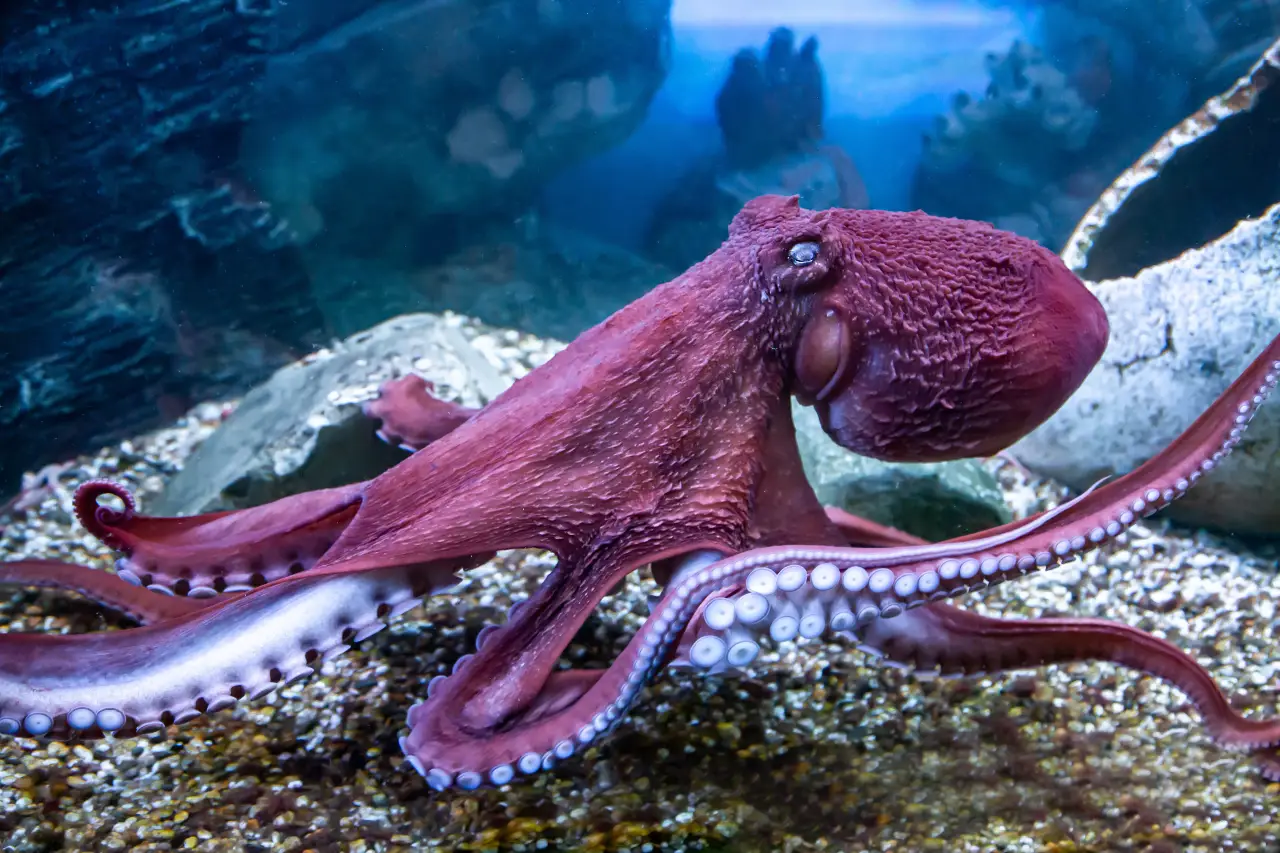Octopus in Fiji: The Masters of Disguise in Paradise
When exploring the vibrant underwater world of Fiji, encountering an octopus is an unforgettable experience. These intelligent, fascinating creatures are known for their remarkable ability to blend into their surroundings, problem-solving skills, and unique hunting tactics. Fiji’s diverse marine ecosystem provides a perfect habitat for several species of octopus, making it a hotspot for divers and marine enthusiasts eager to observe them in their natural environment.
In this blog, we’ll dive deep into the lives of octopuses in Fiji, covering their habitats, diets, species, and unique behaviors.
Habitats of Octopuses in Fiji
Octopuses thrive in a variety of marine environments across Fiji, from the vibrant coral reefs of Beqa Lagoon to the rocky coastal areas and seagrass beds surrounding the islands. They prefer areas with plenty of hiding spots, such as crevices in coral reefs, rock formations, and sandy burrows, which offer shelter from predators.
Common Octopus Habitats in Fiji:
- Coral Reefs: Octopuses are often found in shallow reefs, where they hunt for prey and hide in cracks and crevices.
- Rocky Coastal Areas: These regions provide ideal hiding spots for octopuses, as they can squeeze into small gaps to avoid predators.
- Seagrass Beds: Some species venture into seagrass beds in search of crabs and other small prey.
- Sandy Bottoms: Certain species burrow into the sand to camouflage themselves and ambush prey.
Species of Octopus Found in Fiji
Fiji’s waters are home to several species of octopus, each with distinct characteristics and behaviors. Here are some of the most notable species:
- Common Reef Octopus (Octopus cyanea)
- Also known as the day octopus, this species is one of the most commonly encountered octopuses in Fiji.
- They are active during the day, unlike many other nocturnal species.
- Known for their incredible ability to change both color and texture to blend into their surroundings.
- Size: Up to 3 feet (90 cm) including their arms.
- Blue-Ringed Octopus (Hapalochlaena)
- Although rare, the blue-ringed octopus can occasionally be found in Fiji.
- They are small but highly venomous, with bright blue rings that appear when they feel threatened.
- Size: Around 5 to 8 inches (12 to 20 cm).
- Caution: While beautiful to observe, these octopuses should never be handled due to their potent venom.
- Big Blue Octopus (Octopus macropus)
- This nocturnal species is known for its reddish coloration and distinctive white spots.
- They are often found hiding during the day and emerge at night to hunt.
- Size: Up to 2.5 feet (75 cm).
- Atlantic Pygmy Octopus (Octopus joubini)
- A small species that inhabits shallow coastal waters.
- Known for its tiny size and elusive nature.
- Size: Around 4 inches (10 cm) in length.
Diet: What Do Octopuses Eat?
Octopuses are carnivorous and opportunistic hunters, feeding on a wide variety of marine life. They use their powerful arms to capture prey and their sharp beaks to break through shells. Their favorite foods include:
- Crabs
- Shrimp
- Small Fish
- Clams and Mussels
- Lobsters
Octopuses are highly skilled hunters and employ a range of strategies to catch their prey. They can ambush their targets by blending into their surroundings or use their intelligence to outmaneuver prey hiding in crevices.
Unique Behaviors of Octopuses
Octopuses are among the most intelligent marine animals, known for their problem-solving abilities, tool use, and complex behaviors. Here are some fascinating traits of octopuses in Fiji:
- Camouflage
Octopuses have specialized skin cells called chromatophores that allow them to change color and texture almost instantly. This not only helps them avoid predators but also makes them effective hunters by letting them sneak up on prey undetected. - Jet Propulsion
When threatened, octopuses can expel water rapidly through a siphon, propelling themselves away from danger. This is often accompanied by the release of a cloud of ink, which confuses predators and allows the octopus to escape. - Tool Use
Octopuses have been observed using tools, such as coconut shells and rocks, to create shelters or protect themselves from predators. This level of intelligence is rare among marine animals and makes them fascinating to study. - Regeneration
If an octopus loses an arm, it can regenerate a new one over time. This ability helps them recover from encounters with predators.
Best Time and Places to See Octopuses in Fiji
While octopuses can be seen year-round in Fiji, they are more likely to be encountered during dusk or night dives, as many species are nocturnal. Beqa Lagoon is an excellent place to spot octopuses due to its rich coral formations and diverse marine habitats.
Conservation Status and Threats
While octopus populations in Fiji are generally healthy, they face several threats, including:
- Overfishing: In some areas, octopuses are harvested for food, which can lead to local population declines.
- Habitat Destruction: Coral reef degradation and coastal development reduce the availability of suitable habitats for octopuses.
- Climate Change: Rising sea temperatures and ocean acidification can negatively impact the ecosystems octopuses depend on.
To protect octopus populations, sustainable fishing practices and marine protected areas are crucial. By supporting responsible tourism and conservation initiatives, divers can help preserve these incredible creatures and their habitats.
Final Thoughts
Encountering an octopus while diving in Fiji is a special experience that highlights the beauty and complexity of the ocean’s ecosystems. Their intelligence, adaptability, and unique behaviors make them one of the most fascinating marine animals to observe. Whether you’re exploring the coral reefs of Beqa Lagoon or diving into the depths of Taveuni, keep an eye out for these masters of disguise—you won’t be disappointed.
Ready to discover the underwater wonders of Fiji? Book your dive with Coral Coast Divers and get a chance to see these incredible creatures up close!







